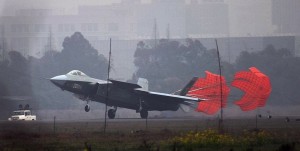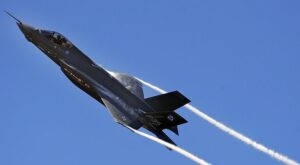China’s J-20 Vs. F-35? Meh, Says CSAF Goldfein; Pilot Crisis Noted
Posted on

PENTAGON: I thought I could hear Air Force and allied F-35 pilots around the world smiling when the new Air Force Chief of Staff said today that comparing the F-35 to the Chinese J-20 “is almost an irrelevant comparison.”
The F-35, said Gen. David Goldfein, is “about a family of systems and it’s about a network — that’s what gives us an asymmetric advantage.” Instead of comparing the J-20 to the Joint Strike Fighter, Goldfein said, it made more sense to compare the J-20 to the F-117 he flew years ago. When he piloted the F-117 into combat, he pushed the wonderfully named “stealth” button and all his antenna withdrew and his seat dropped down to make the pilot a smaller target. The plane had no connectivity with other aircraft once it went into combat.
 “That’s why when i hear about F-35 vs. J-20, it’s almost an irrelevant comparison,” Goldfein said. There’s been enormous amounts of speculation about the Chinese J-20 and J-31 but relatively little comment by American officials. The 2016 Annual Report To Congress about China offered this: “PLAAF leaders believe stealth aircraft provide an offensive operational advantage that denies an adversary the time to mobilize and to conduct defensive operations.”
“That’s why when i hear about F-35 vs. J-20, it’s almost an irrelevant comparison,” Goldfein said. There’s been enormous amounts of speculation about the Chinese J-20 and J-31 but relatively little comment by American officials. The 2016 Annual Report To Congress about China offered this: “PLAAF leaders believe stealth aircraft provide an offensive operational advantage that denies an adversary the time to mobilize and to conduct defensive operations.”
Perhaps the most troubling news from today’s State of the Air Force briefing here concerned the difficulties the service is having retaining pilots. Air Force Secretary Deborah Lee James said the service faces a 700-pilot shortfall by the end of this year and that will rise to 1,000. That includes, most crucially, drone pilots, to whom the service will be offering an increased retention bonus of $35,000, an increase of $10,000.
What’s causing the shortage? The most powerful factor is increased hiring by airlines, but the other factor is the service’s difficulties in training enough pilots fast enough. The service plans to build two new training centers by the end of 2016, James said. While the service has had pilot shortages before, this time it’s particularly challenging because the Air Force is the smallest it’s ever been, and it’s been flying combat and transport missions for 26 years straight, starting with the 1991 Gulf War and the “no fly” patrols that followed.
James reiterated her concerns about a long-term Continuing Resolution, which Congress may well pass given lawmakers’ fixation on their own reelection and the presidential reelection. It will, as Breaking Defense readers know, mean no starting new programs and no approval for upgrades. That would put paid to 60 new starts and upgrades to programs including those planned for MQ-9 Reapers and B-52s, James said. It would also, perhaps pressingly for combatant commanders, mean that production of JDAM smart bombs would be limited to the quantities bought in fiscal 2016, “which we feel is unacceptable” given the rate they’re being used, the secretary said.
Overall, a CR would mean $1.3 billion less for the Air Force in 2017 than requested. The Air Force was already claiming to be overly strapped when the 2017 budget was released. But can Congress act?
Subscribe to our newsletter
Promotions, new products and sales. Directly to your inbox.
